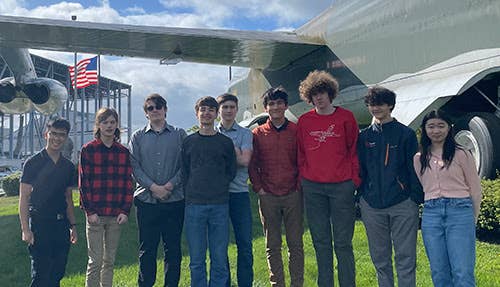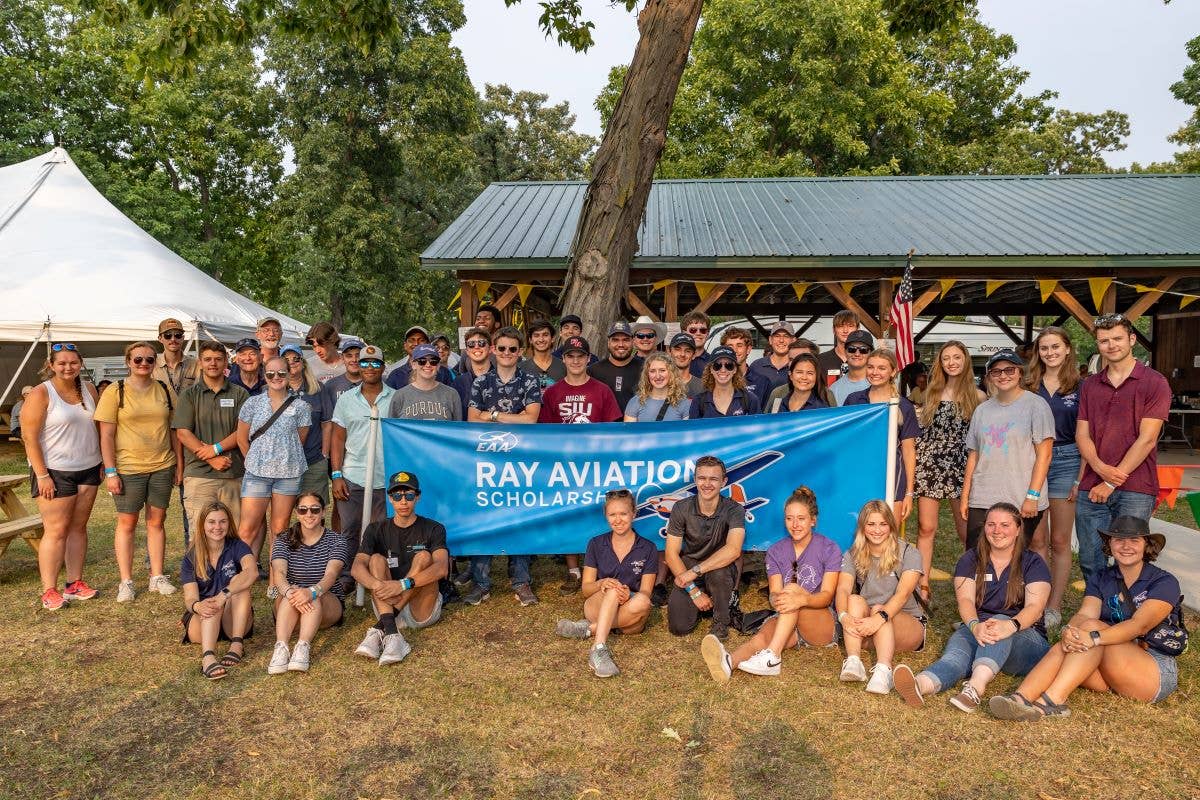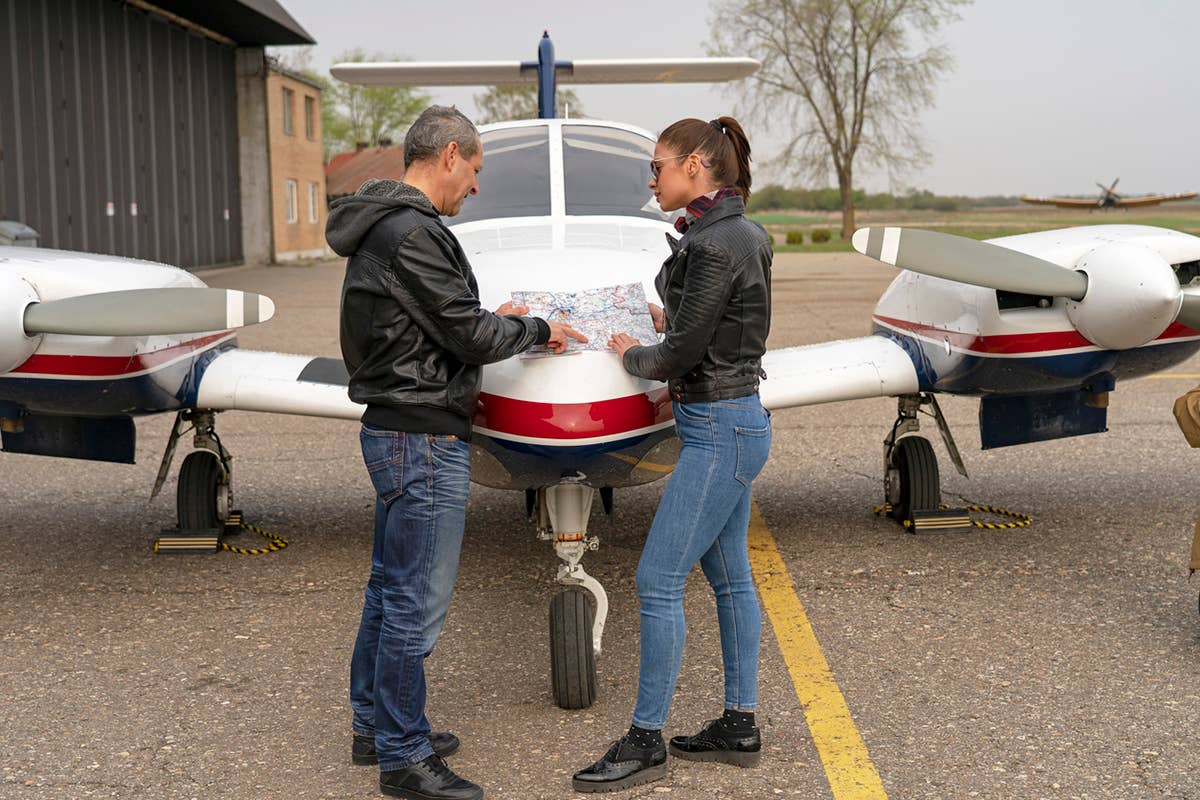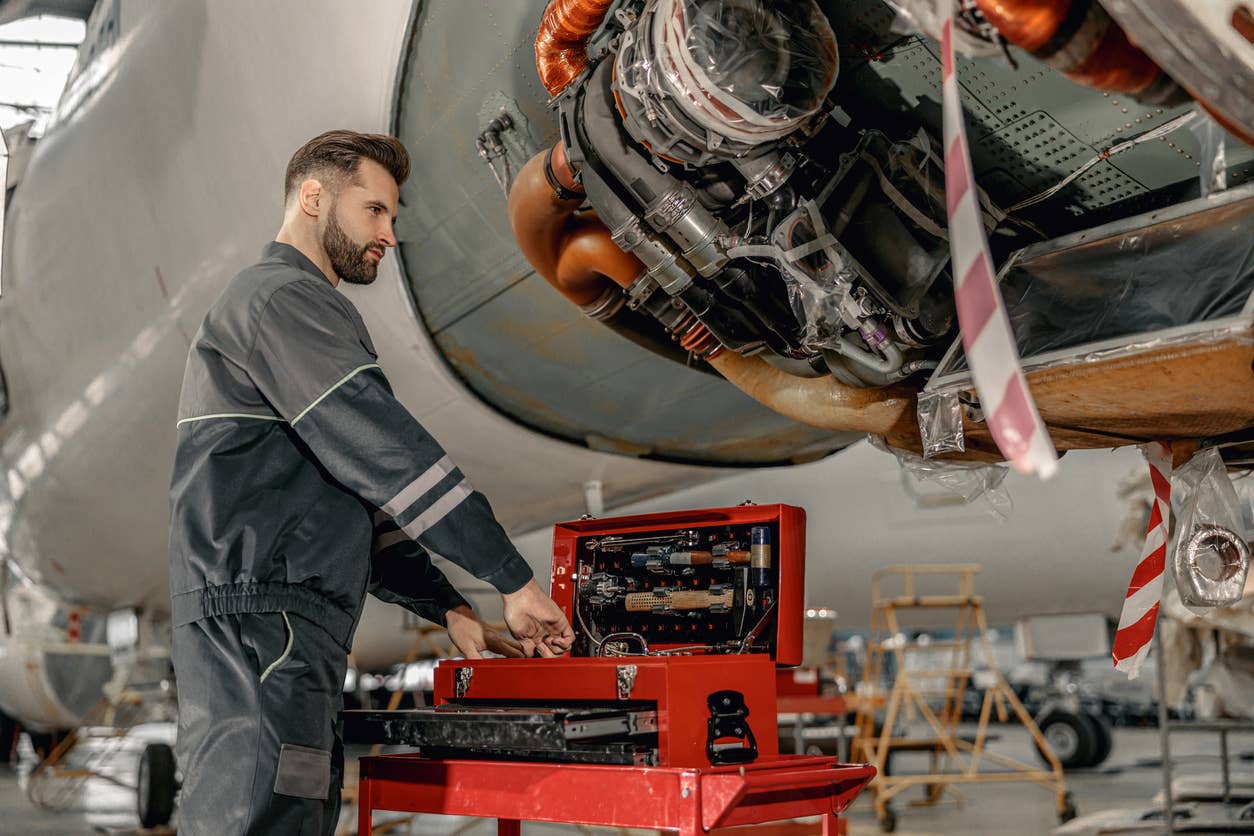UND’s Hardware Keeps Aviation Students Flying High
University of North Dakota’s Aviation Program is bigger than you think.
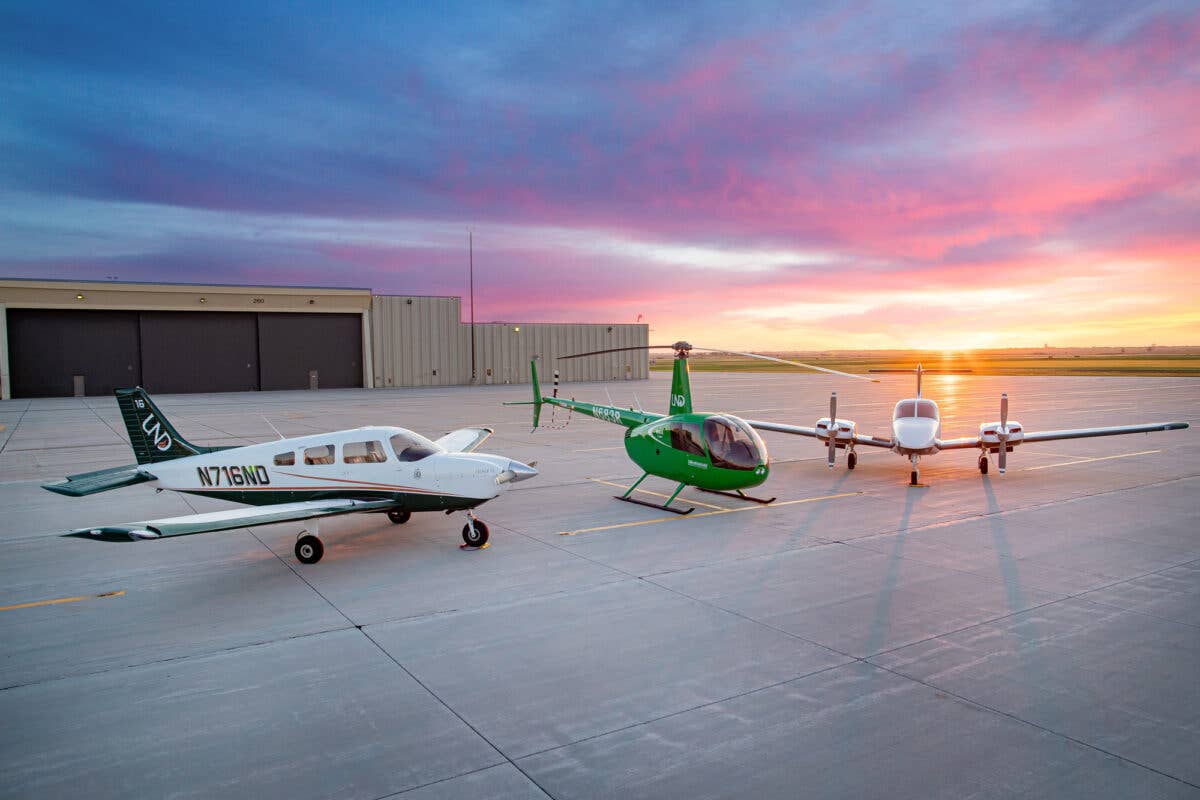
The three main airframes that UND uses for student training are the Piper Archer, Piper Seminole, and Robinson R44 Cadet helicopter. [Credit: Shawna Schill/ UND]
When most people think of the state of North Dakota, images of vast open prairies and acres of farmland stretching to the horizon come to mind.
They might know that the state is home to the National Buffalo Museum or have even visited Theodore Roosevelt National Park. What might not come to mind—unless you are knowledgeable about university aviation programs—is the huge fleet of airplanes and rotorcraft operating under University of North Dakota (UND) livery from Grand Forks International Airport (KGFK).
Jeremy Roesler, the chief flight instructor, airplane, and associate director of flight operations at UND’s John D. Odegard School of Aerospace Sciences, said it is not uncommon for people to underestimate the size and scope of UND’s flight operations at KGFK.
“When people hear that the University of North Dakota is located in Grand Forks, they usually stereotype the program thinking we are a small program in the middle of nowhere. That is far from the truth. In fact, UND conducted over 125,000 hours of flight and ATD training in FY 2022. So far in calendar year 2022 (based on ATC stats posted through the end of October), KGFK was the 25th busiest airport overall and the busiest Class D airspace in the nation,” Roesler said.
The UND Ramp
If you like the sight of an airport ramp area overflowing with general aviation airplanes and helicopters, UND’s operation at KGFK will make you smile. Parked in every available spot are 68 Piper Archers, 15 Piper Seminoles, a pair of ACA Super Decathlons, a trio of Cessna 150s, one Cessna 172S, a Beechcraft King Air, and a Cubcrafters Top Cub.
Roesler pointed out that these numbers only represent the fleet at KGFK and not the university’s satellite site in Phoenix, Arizona. While both sites operate independently, fleet management and the Part 145 repair station operate together, he said.
UND also does a substantial amount of rotorcraft instruction using five Robinson R44 Cadets, which replaced several other helicopters in the program.
“We first brought in the R44 Cadet in 2017 to replace the aging and expensive Bell 206 fleet for instrument training,” said Wes Van Dell, chief flight instructor for helicopters. “The R44 offered the latest glass cockpit technology and was 50 percent faster than the Schweizer 300's, allowing it to keep up with the fixed wing traffic in the instrument pattern. At half the price of the Bell 206, once integrated into our fleet, we realized that we could operate the R44 for nearly the same price as the H300s as well. It also almost doubled our dispatch reliability over the older aircraft due to Robinson's simplified maintenance requirements. That led to our decision to replace all of our rotorcraft with the R44 Cadet.”
Van Dell added that “the R44 is still the most popular piston helicopter in the world and is used for commercial operations from tours to police and electronic news gathering. Many of our students have gone on to fly the R44 for their first commercial job post-UND, and having that R44 experience is invaluable in the hiring process,” he said.
Simulated Flying at UND
“Virtual Reality Training Devices are an area that is changing fast,” explains Roesler. “UND currently offers six VR devices that are coupled with flight controls to fly an airplane or helicopter. Students can fly a Piper Archer in VR and practice all of the various maneuvers and procedures. Researching and learning the capabilities of this type of training is an active area,” he said.
Could this type of training be part of future FAA training regulations allowing the time to count toward certification? “Someday,” Roesler answered. “Right now, we utilize VR training as an optional resource for our students, and they have been used to supplement the student's training. Students having trouble with a certain aspect of flight training can use the VR devices to help practice.”
Along with the nine Frasca AATDs set up as Piper Archers, UND Grand Forks also offers a Frasca CRJ-200 FTD Training Device and a new ALSIM Airliner Training system. Of the ALSIM simulator, Matt Opsahl, assistant chief CFI (ATD/FTD Training) said, “We are excited for the next chapter of flight training at UND Aerospace. The ALSIM advanced, mid-size jet simulator will give students the upper hand in all aspects of their flight training before they head out for their careers. Being at the forefront of worldwide flight training, this was a logical addition for UND and our students. UND will begin using this device in the January 2023 semester,” he said.
Standardized Avionics
Roesler said that he feels the Garmin G1000 NXi avionics suite is “without a doubt the best integrated flight deck for collegiate aviation,” and the school strongly believes in having a standardized fleet. “Having the Garmin G1000 NXi in both the Archers and Seminoles allows our students to transition to the Seminole multiengine trainer very easily,” Roesler explained. “Our students are exposed to a full glass cockpit experience because our program is based on training tomorrow’s pilots for the airlines and private/corporate flight operations. The G1000 NXi suite helps to prepare our students for those advanced operations,” he said.
More Than Just Learning To Fly
Roesler said UND typically has about 1,400 students on the flight schedule throughout the semester. And while they do indeed learn to fly, UND Associate Dean Dr. Elizabeth Bjerke explains that the program focuses on much more than just flying airplanes.
"The interest of young people wanting to study aviation is continuously increasing, which is great to see," Bjerke said. "However, as a flight training program, we can only accept the number of new students that we can effectively train in a given year. Our application window for the Fall 2023 start date was open from August 1, 2022, to November 1, 2022. During that time frame, we received well over 1,000 applications for our flight degree programs and will only be able to accept roughly 65 percent of those that applied. This does make it a competitive process for admittance to the flight training program. However, this is a very cyclical industry, so as we see demand for flight training increasing at the present, we also know that it may simply take a turn in the economy or other outside factors to change this demand overnight."
Bjerke explained that if students aren't afraid to work hard and have a passion for aviation, they will excel on the UND campus outside of the flight line.
"For example, we have over 30 Division I student-athletes in our program, and over 30 percent of our marching band is made up of aviation students. We also have students actively involved in the over 200 student organizations our campus supports, including ones focused on aviation, such as our Women in Aviation, Organization of Black Aerospace Professionals, APLA ACE, and National Gay Pilot Association UND Chapters. Our aim is to graduate students who are more than just a pilot, but also an aspiring aviation professional that has acquired skills outside of the classroom in regards to leadership, teamwork, communication, and a desire to give back to their community," she said.

Subscribe to Our Newsletter
Get the latest FLYING stories delivered directly to your inbox


